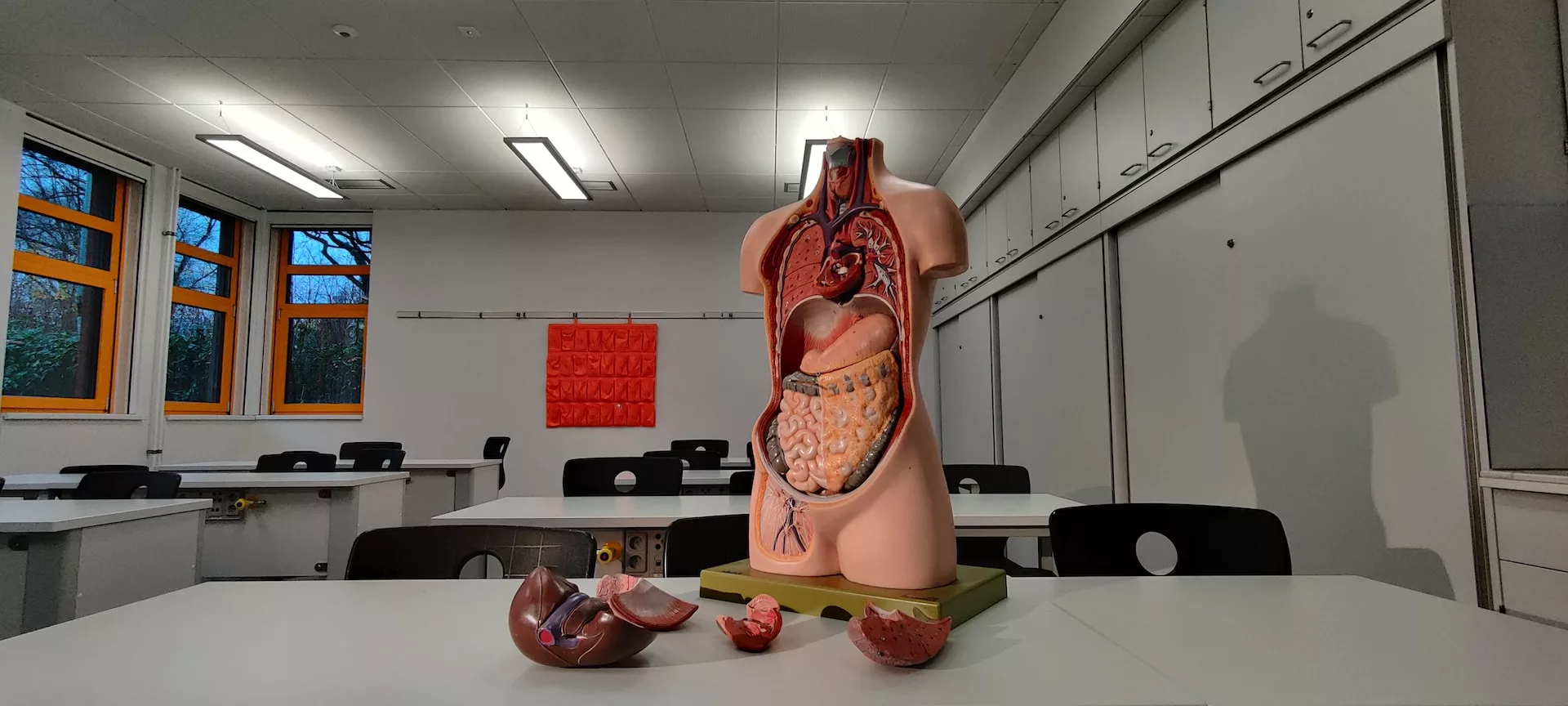Current medical teaching widely relies on cadavers—could these be replaced by new, virtual alternatives? Image credit: Kevin Kandlbinder via Unsplash
The year is 1880 and you are a 21-year-old student who has completed your secondary education and has been freshly accepted into one of the dozens of newly sprawling medical schools in the United States. There are novel medical societies with educational standards that set the medical field as an “ethical” and a noble profession. It is your first day of classes and you mentally prepare yourself for courses on chemistry, surgery, midwifery, and (of course) human anatomy. You stand with excitement in a medical theatre alongside your fellow colleagues and some janitors with custodial equipment.
“Welcome to the honourable profession of medicine,” exclaims the medical director, who walks into a room giddy with nerves and excitement. After the standard welcoming remarks, the director starts handing out pickaxes and shovels. Suddenly, everyone looks puzzled. “Why do we need shovels?” yells one brave student.
The medical director goes on to explain that you, alongside the janitors, for your first assignment, will perform some graverobbing to acquire corpses to dissect. They assure you that, while technically a misdemeanor, there was a low likelihood that you would be prosecuted, and it was all done in the name of medical education.
They assure you that, while technically a misdemeanor, there was a low likelihood that you would be prosecuted, and it was all done in the name of medical education.
Fast forward to today and thus began the conundrum of what to do about the human remains that we still have until this day.
Nowadays, people can go online and purchase human remains in a largely legal manner, through online marketplaces or even on social media apps. A lot of the human remains available for purchase today were gathered through ethically dubious means in the 19th century or from marginalised communities.
Since then, medical schools have moved away from the grave-robbing days and towards accepting body “donations” to medical science. This began in the UK with the 1832 Anatomy Act, which gave license to medical professionals and students to dissect unclaimed bodies from low income hospitals and prisons. Some of the UK anatomy acts and practices preceded acts in the United States and often influenced US-based practices. This eventually became the Human Tissue Act of 2004, which now legislates the use, storage and disposal of human tissue and bodies.
Some medical programs even go further to avoid real human remains and instead look to replica bone models. Others have even moved towards a virtual anatomy curriculum, instead of in person dissection. Schools in the US, such as Kaiser Permanente Medical School, have introduced an Anatomy beyond Cadavers curriculum, which uses virtual reality (VR) headsets allowing students to explore anatomy in an interactive virtual reality space rather than with a cadaver in a gross anatomy lab.
The advent of virtual medical anatomy also introduces new questions: should all medical programs move towards virtual anatomy curricula over body donations? How will this affect the level of medical education and eventual medical practice? As someone who took part in traditional medical anatomy, education, and cadaveric dissection, I do have my biases towards the old traditional way of learning.
There is almost a rite of passage in medical education of learning medical anatomy and pathology through cadavers, which stretches back to Ancient Greek physicians.
One can go read ancient texts from medieval anatomists as they recall their findings obtained through the act of dissection. So, it is only natural to be reluctant to the introduction of modern technology. Nevertheless, it is important to embrace the new technology in medical education to see how it can augment and improve the abilities of our future physicians.
Perhaps rare pathologies that can rarely be observed in live patients can be observed more frequently and easily using virtual environments. Conditions, for example, such as dextrocardia in situs inversus, where the heart and other organs are found on the opposite side of the body, can be observed. Normally this takes place in 1 in 10,000 people, so it would be rare for a cadaver to present with such a condition. However, with the advent of VR, this can easily be studied by medical students.
Should all medical programs move towards virtual anatomy curricula over body donations? How will this affect the level of medical education and eventual medical practice?
However, virtual medical anatomy doesn’t address the existing issue of what to do about the human remains that are currently in use in medical education. Some of the origins of the remains are well documented, though many have more questionable origins. One solution would be to return the remains to the families of the subject. However, this presents challenges as not all the remains contain the proper identifying paperwork.
Another solution could be to continue to use the remains towards the proper cause of advancing medical education. Again, this potentially introduces ethical qualms, as the individual did not freely donate their remains to science when alive.
A third solution could be to provide a reburial for the remains. Guidance from archaeology could be used, such as by using the 2017 manuscript entitled “Guidance for Best Practice for the Treatment of Human Remains Excavated from Christian Burial Grounds in England”. Documents like these set out advice for reburials, including forming advisory committees to figure out best practices for implementing reburials. However, like the first case, this would present many logistical challenges, both financial and locational.
Therefore, how does one balance the potential good that could come from medical professionals learning from these materials, such as the saving of lives, with the ethical harm of continuing to use these human remains? All in all, virtual anatomy does introduce new and exciting advancements in the field of medical education which should be pursued. However, many questions still remain on how to address the atrocities associated with early medical education which still impact education today.





